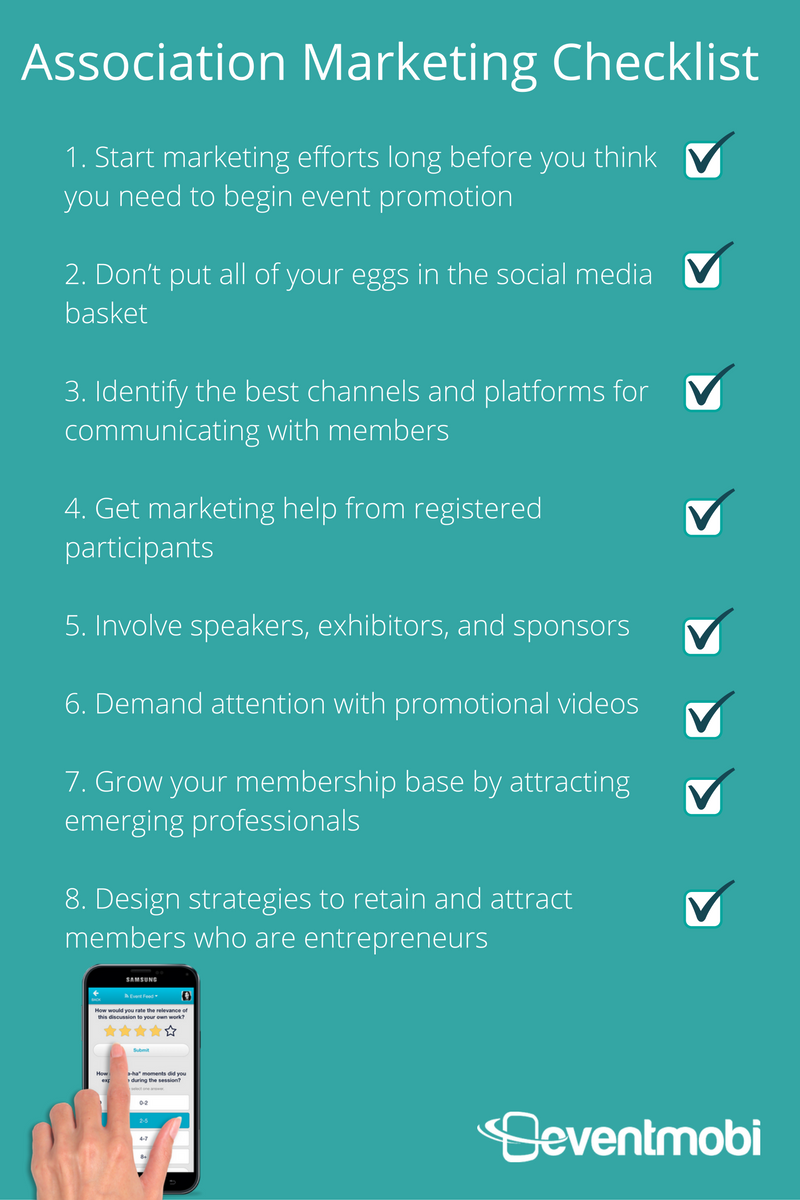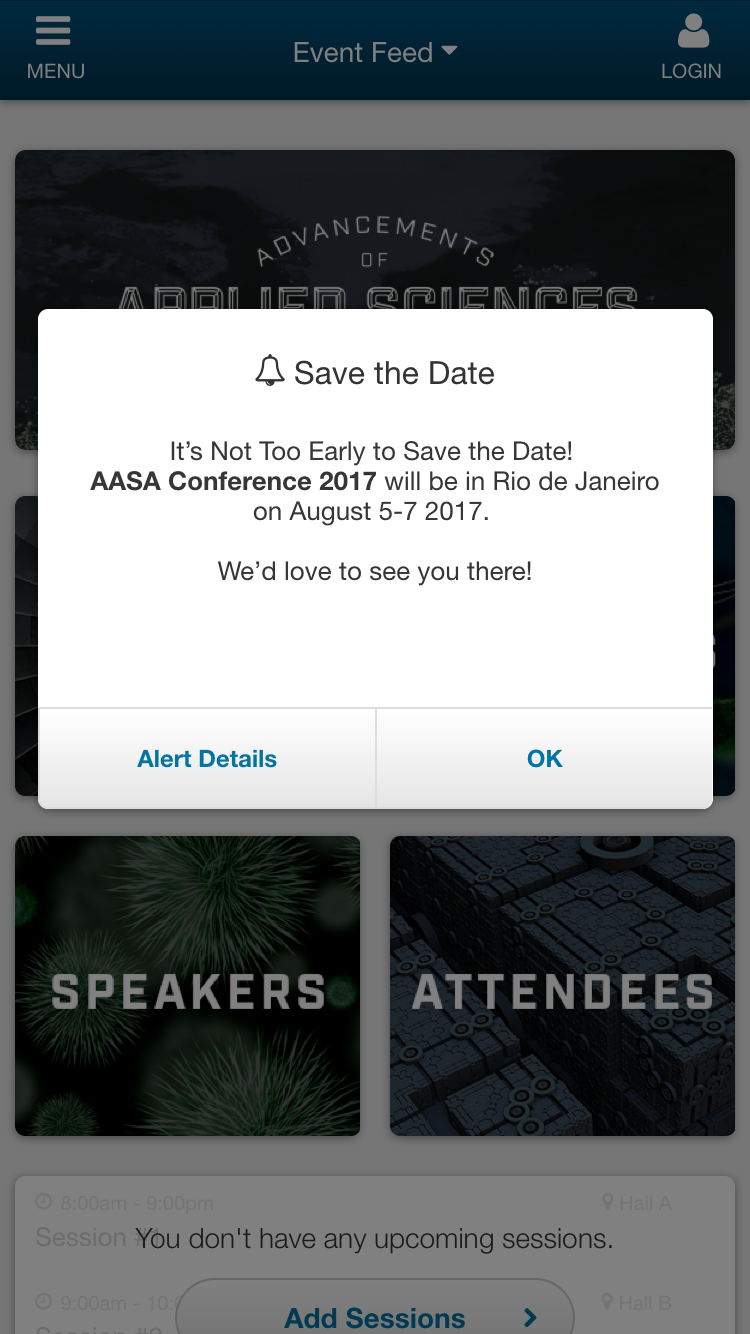Association Event Marketing: 8 Strategies to Market Association Events

It’s worth noting that some associations and chapters have recently ceased operation or merged. In 2014. MPI’s Utah and Rocky Mountain Chapters merged. In 2015, MPI’s Manitoba Chapter closed.
Every event represents an opportunity to reinforce the association’s value proposition in order to retain current members and grow the membership base. This will ensure:
- long term survival and viability
- financial stability (i.e. continual revenue streams through dues and fees for programs and events)
Recently, Harvard Business Review addressed some of these challenges in To Stay Relevant, Professional Associations Must Rebrand:
“According to the American Society of Association Executives – association membership is declining across the board. Social networks now provide easy and convenient ways for industry members to find each other and network, and the proliferation of online content has led to vast and often free access to the types of information, insights, and training that professionals used to be able to access only through association membership and industry conferences. Millennial workers… place less value on formal and traditional means of networking….”
1.Association event marketing efforts need to begin long before you think.
Lead times need to be longer for a number of reasons. Some companies have moved approvals to higher levels in the organizational hierarchy. It may take longer to get the required sign-offs. Budgets for conferences and professional development programs have been slashed in many organizations. It is important for prospective participants to get approval early before the budget has been earmarked for other initiatives.
As a general rule of thumb, begin marketing next year’s conference or trade show before this year’s event is over. If your conference has an app, encourage all participants to download it and send out “save the date” push notifications before this year’s event is over. Extend special rates to this year’s participants if they register for next year’s event by a specified deadline. (Family resorts have successfully used this strategy for decades.)
2. Don’t put all of your eggs in the social media basket.
While online marketing has been popular for the past 20 years and there has been more and more emphasis on social media marketing during the past 12 years, it is important to use a mixture of online and off-line strategies for association event marketing.
A conference in Europe with major industry headliners was recently cancelled due to low ticket sales despite extensive social media promotion.
3. Identify the best channels and platforms for communicating with members.
With association event marketing, it is important to pinpoint the best places to connect with members. It’s easy to obtain this information. On membership applications, membership renewal forms, and event registration forms, you can request information about the most popular:
- blogs
- social media channels
- magazines and other periodicals
This information will provide a detailed picture of the best connection points and help associations determine where to invest marketing budgets and efforts.
4. Get marketing support from registered participants
For specific events, provide registered participants with email copy and PDF brochures to forward to colleagues. Hold membership drives and supply collateral support.
Online:
- Post about upcoming conferences and association events on social media and other online channels that are popular with members.
- Launch a LinkedIn or Facebook Group to engage members throughout the year.
- Use your event app to send information about speakers and programming and reminders about early bird specials and registration deadlines.
Off-line:
- Promotional postcards and print brochures are no longer used frequently. As a result, as a result, when they are used, they can be more targeted and strategic.
- Printed collateral can be mailed directly to association members and last year’s conference participants.
- It can also be used as stuffers in association mailings and magazines that are popular with members.
- Be sure to include your event app URL and social media coordinates on all printed collateral.
5. Involve speakers, exhibitors, and sponsors in association event marketing.
- Expand your network. Ask speakers, exhibitors, and sponsors to promote association events on their social media channels, websites, and blogs. In fact, some associations include promotion clauses in speaker, exhibitor, and sponsor contracts.
- Bring your subject matter experts to light. To spark interest in association events, host Twitter chats, and pre-event webinars featuring keynote speakers and facilitators for breakout sessions.
- Give first-time attendees an idea of what to expect. Create a Q & A blog post after interviewing a few of last-year’s attendees, find out what they’re looking forward to this year and write a post to capture and share the excitement.
6. Drive excitement with event videos.
YouTube and Vimeo videos are under-utilized but highly effective for promoting associations and their events. The videos can be embedded in blogs and on websites and the links can be shared in emails and on social media.
7. Grow your membership base by attracting emerging professionals.
With targeted strategies focusing on emerging professionals, organizations can attract new members, grow their membership base, and remain viable.
In addition to increasing visibility on social media channels that are popular with young professionals, be sure that event and agendas include topics and entertainment that appeal to emerging professionals. ASAE described how the American Academy of Optometry boosted its membership by engaging students.
Here are some examples of initiatives that market associations directly to emerging professionals.
- The Toronto Board of Trade’s Young Professionals Network (YPN) offers monthly networking and professional development events for members and non-members who are under 40.
- Canadian Public Relations Society and the Public Relations Society of America (PRSA) has student memberships. In fact, PRSA has the affiliate Public Relations Student Society of America (PRSSA) that gives students access to local chapter events.
- MPI offers scholarships for students.This is an excellent way of increasing visibility and attracting students.
- The Future Leaders Forum, a joint IMEX-MPI-MCI initiative, encourages the next generation to participate in industry trade shows IMEX and association events like MPI’s World Education Congress
8. Design strategies to retain and attract members who are entrepreneurs.
Gear some marketing initiatives to entrepreneurs. When entrepreneurs pay for membership out of their own pockets, they expect to derive value in terms of lead generation and business development. If there is no ROI for their membership, they leave. As more and more professionals opt for the entrepreneurial route, this can shrink the membership base significantly.
Ensure that entrepreneurs receive value for their membership. For example, be sure to rescind any policies that prohibit members from including websites and social media coordinates on presentation handouts.
Consider offering:
- BNI-style structured networking events in which each participant gives a 60-second commercial and other members pass leads to them.
- Offer mini-trade show exhibits at some monthly events. A table top format around the perimeter of the room works well.
- Offer professional development programs focusing on marketing and running businesses.
What’s Next?
- For more association event marketing strategies, come meet us at ASAE 2016!
- Wondering how to use drones or virtual reality at your upcoming events? Get some ideas.
- Need strategies on marketing your event app? Download our Ultimate Guide to Event App Marketing
